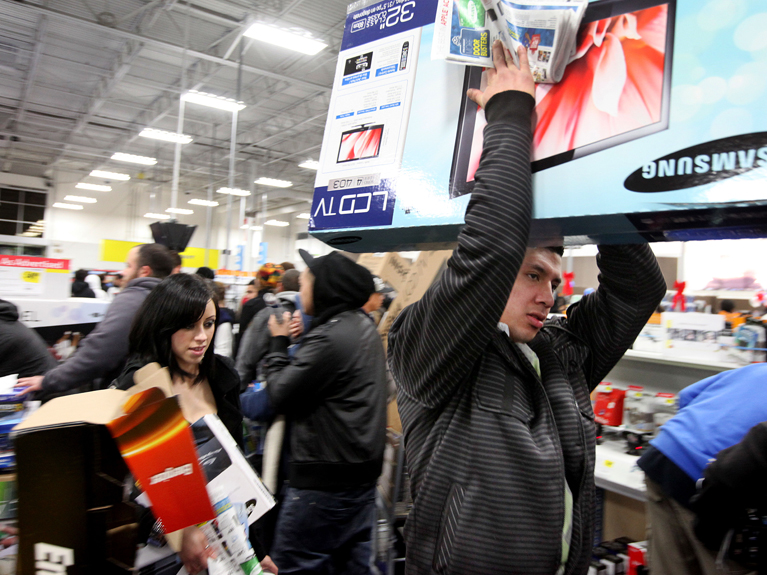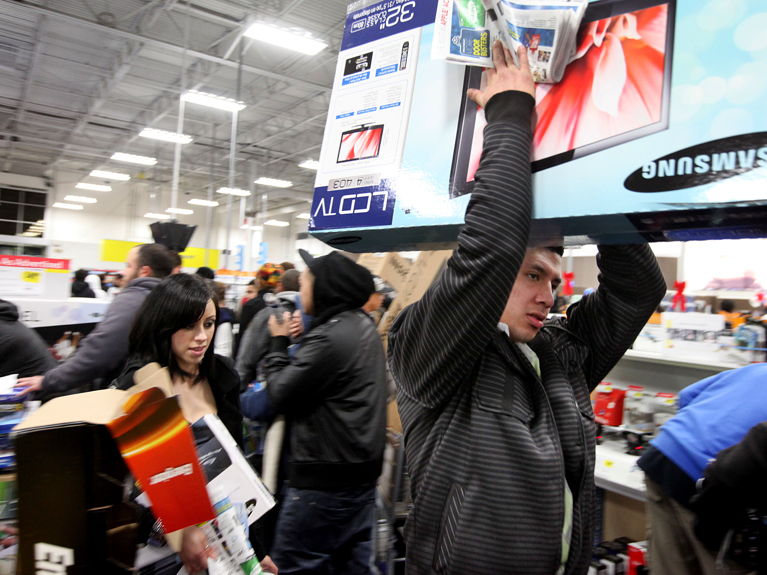Elections don’t help.
Although the US economy is looking its brightest since before the dark days of the GFC, unemployment is steady at 5% and gas is cheap, US shoppers are not spending.
According to the Bureau of Economic Analysis consumer spending has been decelerating for the last three quarters, despite retail sales lifting 1.3% in April, the largest increase in more than a year.
In fact, the Consumer Confidence Index dropped to 94.2 in April from 96.1 in March.

According to Lauren Sherman, writing in The Business of Fashion, there is an “eery stillness in American retail” that doesn’t quite add up with the relative stability of the country’s economy.
While, fashion retailers have mostly been feeling the squeeze (comparable store sales at Saks Fifth Avenue were down 1.2% t in the quarter ending January 31, 2016. For the Neiman Marcus Group, comparable store sales were down 2.4% during that same period. Macy’s weak first-quarter 2016 report, which included a 5.6 percent drop in comps,sent ripples through the stock market.
“We are seeing continued weakness in consumer spending levels for apparel and related categories,” Macy’s chief executive Terry Lundgren said in a note to executives. “In particular, our sales trend relative to expectations meaningfully slowed beginning in mid-March, and first quarter results are below our original outlook.”
“In the past year, the US has been viewed globally as a place of opportunity. A still-weak Chinese economy, a turndown in European tourism related to terrorism fears, and an overall uncertainty in the global marketplace made the US feel like a safer bet. But the American shopper remains wary,” she says.
While Sherman observed that the whys of these circumstances are wide ranging, and have broader implications than a few months of weak sales.
“They suggest that retail as we know it is forever altered.”
According to US retail consultant Robert Burke, “When oil prices, unemployment, and gas prices are low, and interest rates aren’t necessarily high generally people want to go shopping. I think that there are some factors that did not exist to the degree that they do today that have changed the patterns and the way in which people shop.”
One such factor is the increasingly unpredictable weather, something which is also impacting Australian retail. The majority of the US experienced an unseasonably warm winter and an unseasonably cool spring, meaning many retailers have already begun marking down their warm-weather product long before the peak of swimsuit season. While some nimble retailers can adjust inventory to an extent to better serve the conditions outside, most are wedded to the merchandise they ordered six months ago.
Another component is the presidential race. While retail is traditionally soft in an election year, the presence of a polarising candidate like Donald Trump has intensified the effect. “I’m in the malls three-to-four times a week, and all we hear about is the uncertainty around the election,” retail analyst at A Line Partners Gabriella Santaniello said .
“Sales associates are talking about it in the stores, and that’s unprecedented. I do think that it’s touching consumers at all socioeconomic levels.”
Meanwhile Shrman said that consumers are still recovering — if not financially, but emotionally — from what they refer to as the “Great Recession” which wiped out many retirement accounts and sent millions of homeowners into foreclosure.
“A lot of people have post-traumatic stress disorder when it comes to spending,” Cornell College economist Todd Knoop added. “The economy has evolved more quickly than people’s [thoughts] on how the economy is doing.”
But the recession also trained consumers to think differently about pricing. Thanks to season-end fire sales, near-continual markdowns and an increase in off-price retail channels, consumers expect virtually everything to eventually go on sale.
“The increase in promotions has had a ripple effect,” Burke said. “The luxury shopper used to be embarrassed to compare price or ask about price, and it’s commonplace today.”
There has been a shift in values as well. A certain set of consumers — perhaps those with more expendable income — are wedded to buying fewer items of higher quality, turned off by conspicuous consumption. Many have also shifted their spending from things to experiences.
“As a whole, the customer is more discerning about how she spends,” Burke said.
However, post-recession conservatism is only one part of the equation. The breakdown of the economy happened to coincide with the rise of digital commerce, which has not only allowed consumers to easily comparison shop, but also encourages them to be more brand agnostic.
“All of the sudden your consideration set is much bigger when you’re searching via the web,” head of retail at research firm L2 Lauren Kaufman Witten explained. “For example, if you’re searching for a Christian Louboutin shoe, three quarters of the first page of Google real estate goes to paid search.”
That means a consumer will not only see those glossy red soles, but also paid advertisements for often-like-minded brands.
That increase in options has created less loyalty among consumers, who are driven more by pricing and styling and less by the mythology around a name. “When was the last time brand was important, really?” Santaniello asked. “It might have been right before the recession when aspirational luxury was on the rise.”
To be sure, brands and retailers alike shouldn’t expect a post-recession boom any time soon. “Overall, consumers do seem more cautious than a decade earlier, but that is good news,” argued senior fellow of economic studies at the Brookings Institute Barry P. Bosworth. He said that, over the past three years, the saving rate has remained stable at about five percent of disposable income. “Certainly that is a more conservative pattern of behaviour than in the boom years of the late 1990s and the period before the financial crisis, but it strikes me a quite normal or sustainable type of behaviour.”

